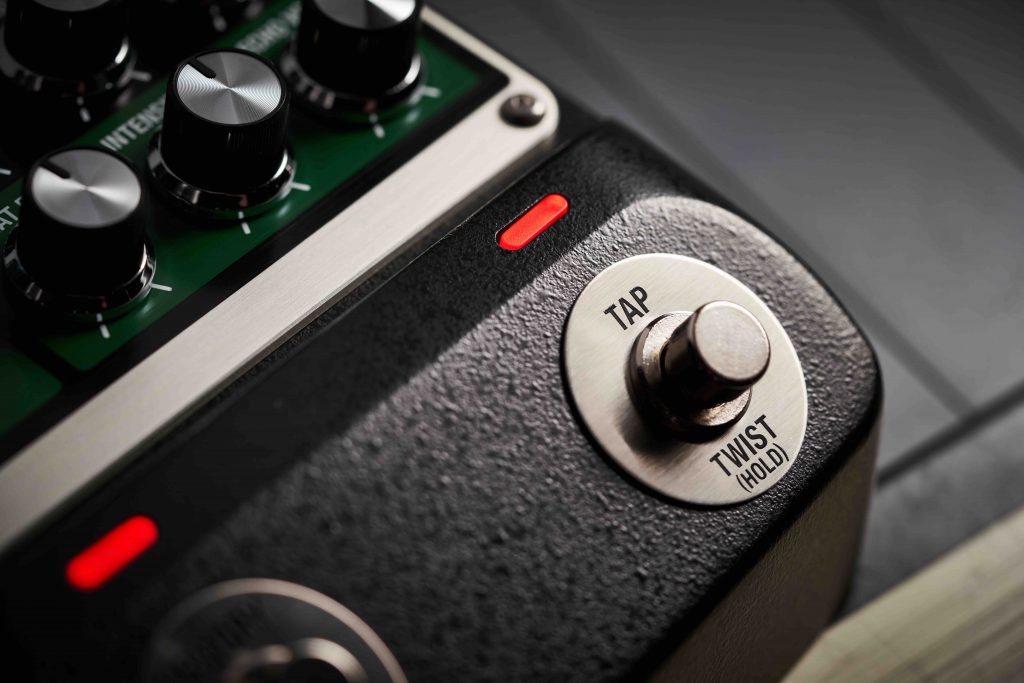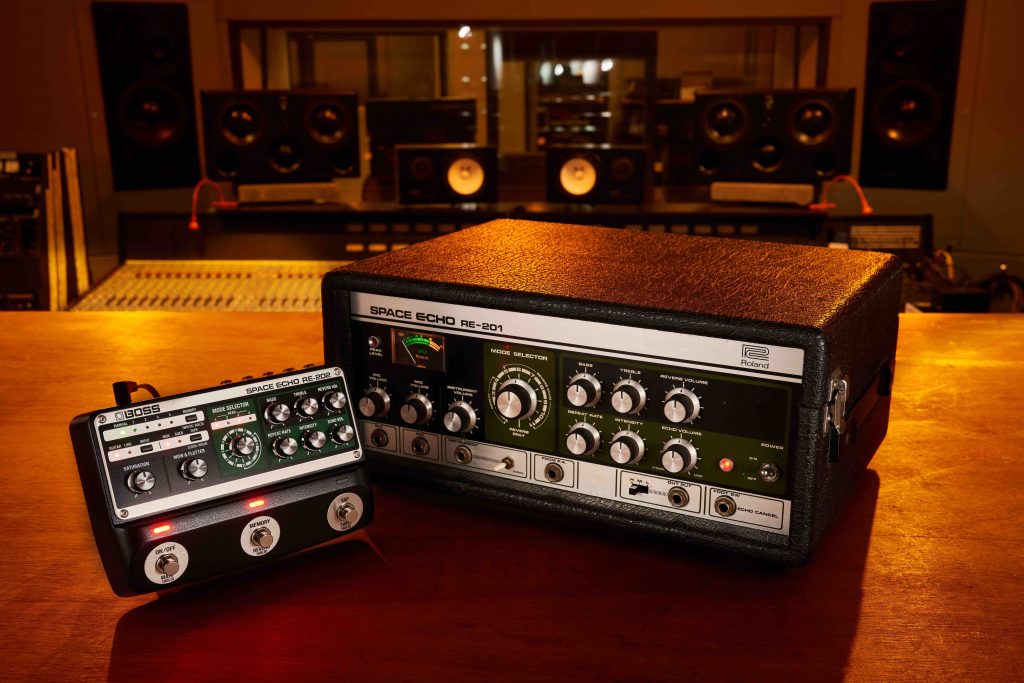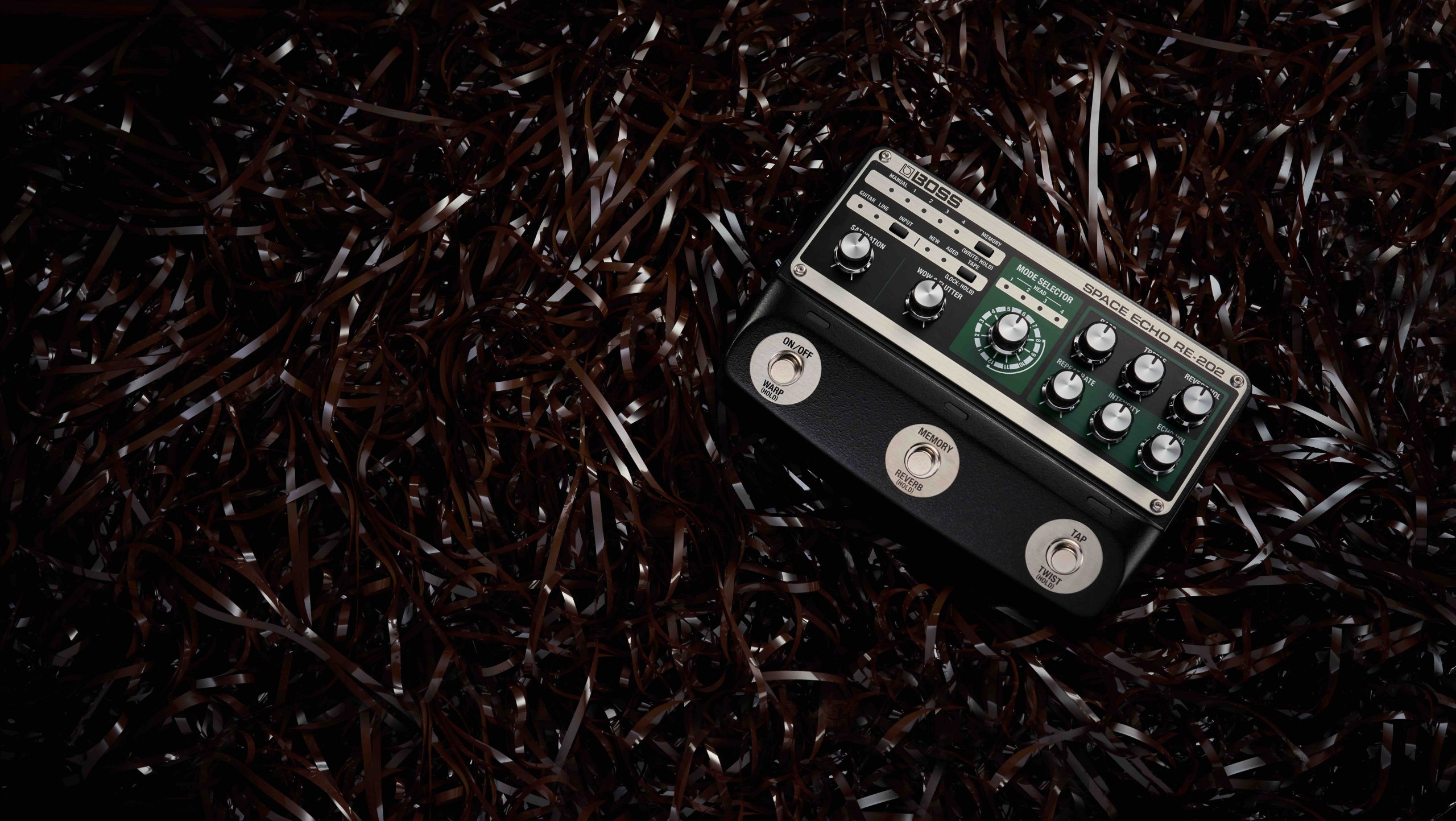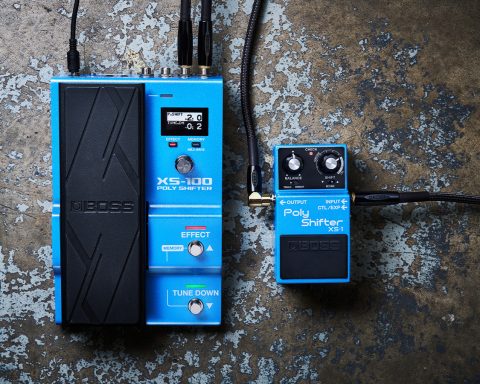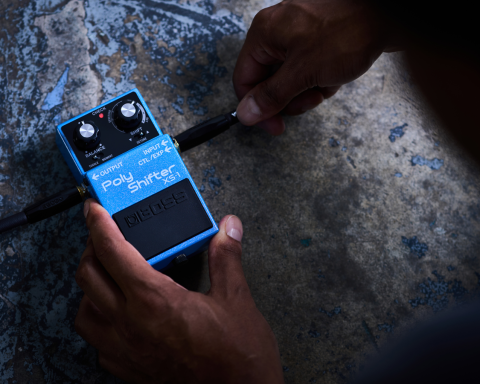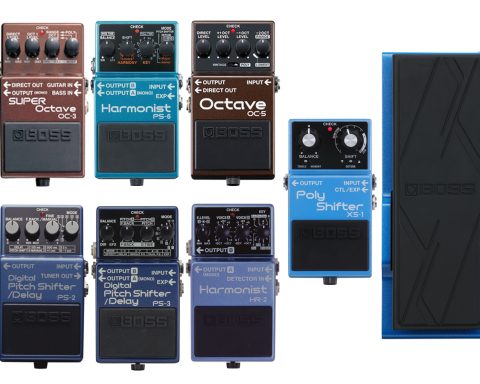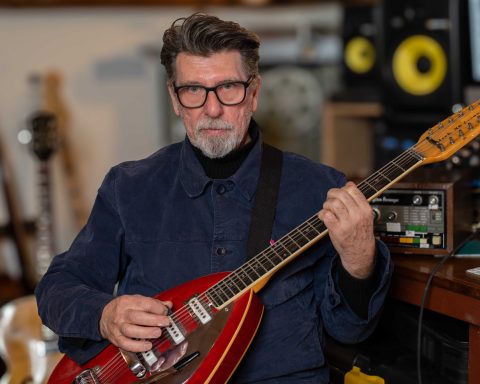Echo is a primeval effect—as intuitive as launching a voice into a canyon and waiting for repeats. To many, the Roland Space Echo is the quintessential tape echo, a sound that appears on recordings by musicians of all stripes. After years of carefully analyzing the RE-201, the BOSS engineers created the RE-202. The unit is simultaneously a tribute to its legendary forebearer and a bold step forward. With detail, humor, and reverence, the team shares the process of capturing and advancing the classic Space Echo sound.
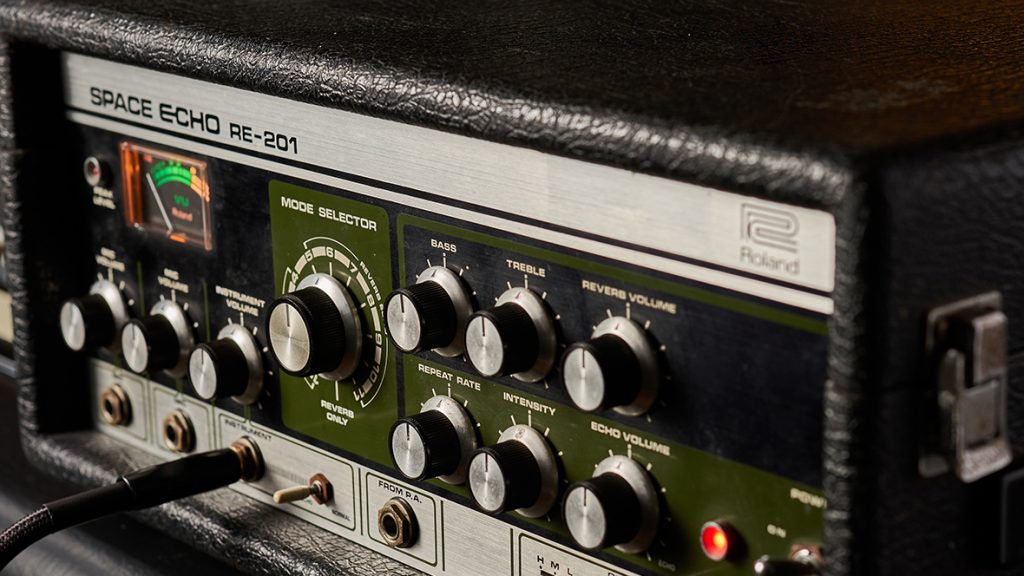


The Everlasting Moment
How did BOSS decide it was time to design a new Space Echo?
The Roland Space Echo has been a mainstay for many musicians for decades. However, recently we noticed an increased demand for the Space Echo sound. The RE-20 Twin Pedal was on the market for over ten years. Yet customers continue to seek the perfect Space Echo sound. The nature of an old unit means there can be many unique characteristics. This has made it incredibly popular for many musicians—and not only guitar players. We’ve seen it used by sound and mix engineers and DJs.
Witnessing the continued popularity of the Space Echo for 30 years, what were your next steps?
Even after the RE-20 pedal, we continued our research into the Space Echo. There was always something different to chase to capture the perfect sound. With the Space Echo, we started to recognize that many different things can alter the sound. Mechanical factors, like the effect of the echo rate, change when the tape slips. Due to DSP limitations at the time, it was impossible to realize all those factors in sound design.
BOSS is always developing its DSP technology. The time came when we could realize ideas we’d had for years. As the next step in design, we had the power to realize the best Space Echo experience to satisfy long-term fans as well as someone new to the sound. Everything we put into the RE-202 and RE-2 achieves what we couldn’t with the RE-20.
“There was always something different to chase to capture the perfect sound. With the Space Echo, we started to recognize that many different things can alter the sound.”
Model Behavior
Can you describe the modeling process?
To start with, we analyzed several original RE-201 units. Then we deeply re-analyzed the individual components of the overall sound. This meant looking at tape heads, tape tension, bearing parts, and guide pins. It was also important to analyze character changes when set to different speeds.
Examining these parts from every aspect, we inspected the frequency characteristics, width and change of echo rate, and how the sound and echo rates change when the knobs move. We inspected each part to understand how it impacts the overall sound. In particular, we focused on reproducing the preamp distortion alongside sound compression due to magnetic saturation of the tape. It was also important to capture the way the sound character of a unit changes when set to different speeds.
The overall design was not just about the sound but reproducing it from a mechanical perspective. Plus, we had to make sure we retained the tactile feeling of the original RE-201. The look and feel of the original units are part of their charm.

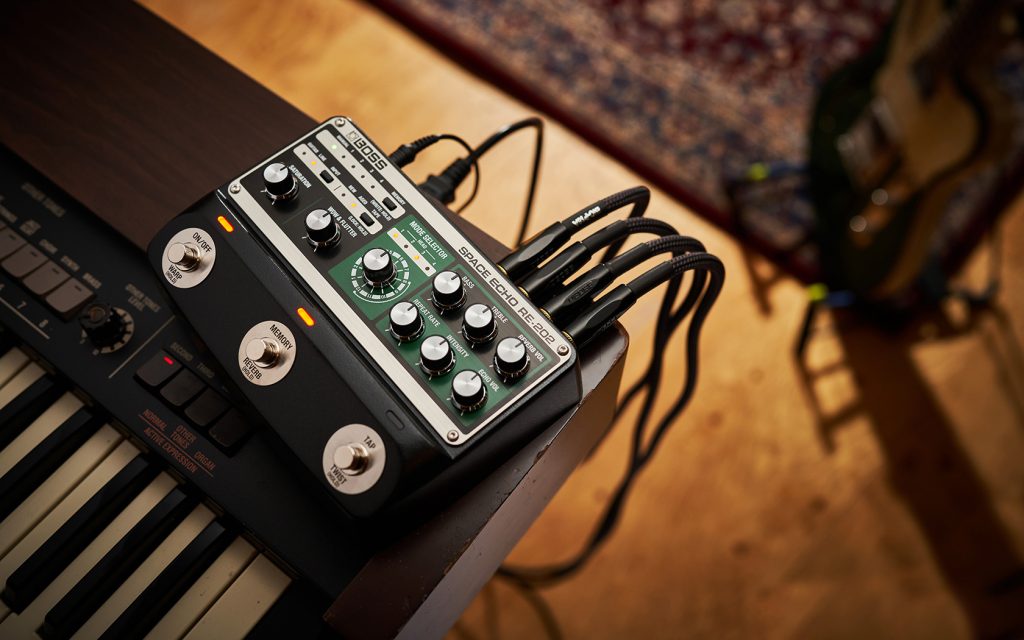
“We had to make sure we retained the tactile feeling of the original RE-201. The look and feel of the original units are part of their charm.”
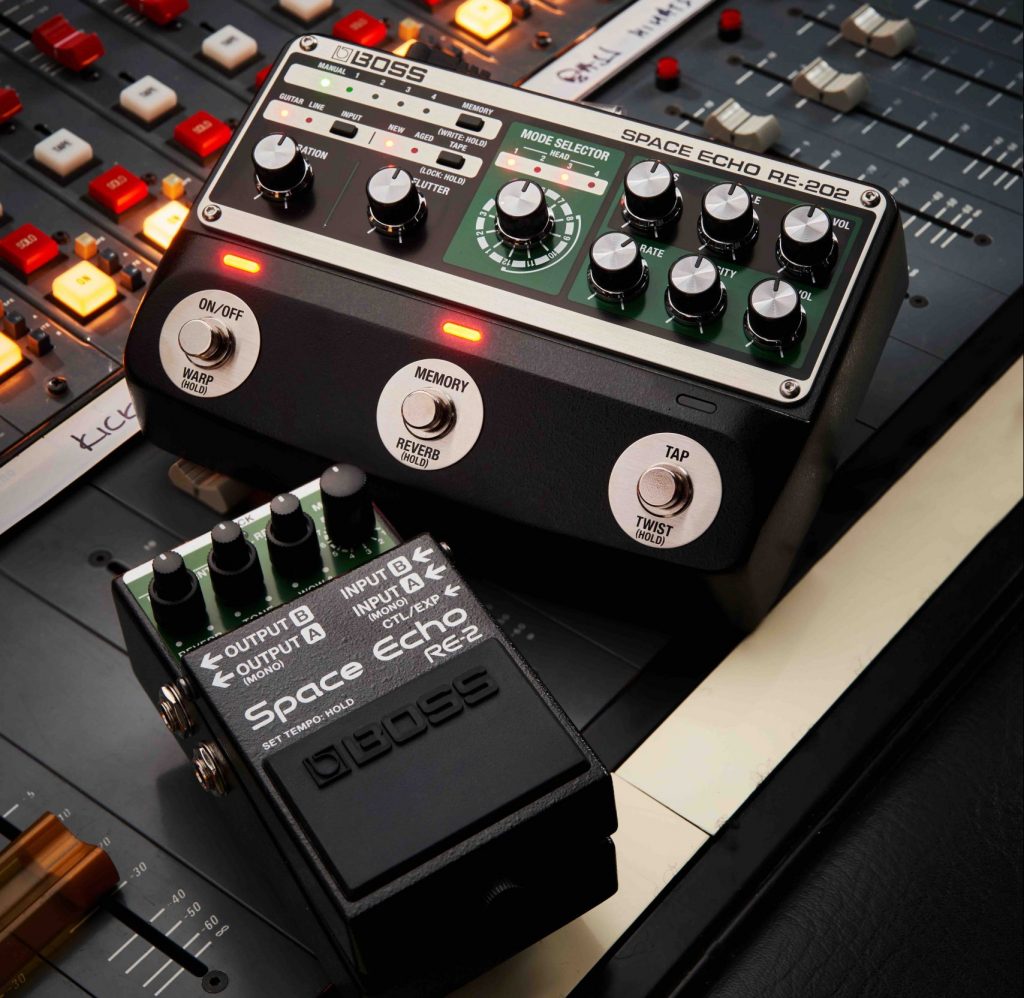

Repeat Performance
When discussing a unit based on a legacy product, words like modeling and algorithm come up. How do you define these terms?
It’s often on a case-by-case basis. Modeling has a broader definition and is easily understood. That’s what we say when talking about what we are capturing. DSP is individual internal processing, such as modulation processing, saturation processing, or volume processing. An algorithm is an aggregate of several DSPs that achieves some purpose.
Did any special RE-201 units help in the design process?
Of course. We have access to original units, design ideas, and diagrams for RE-201. They helped us study many different characteristics of the Space Echo sound. One unit is very special. It is a mint condition, archived unit from when we first started producing the RE-201 back in 1974. It’s very lucky that Roland and BOSS always kept an archive of our products for the future.
What are the key elements of the Space Echo character?
A big part is the multi-head tape echo design and the tape head placement that generates even intervals for echoes. The combinations of tape heads like 1+3 and 2+3 offer players a unique, rhythmical delay only these units can provide. The next big thing is the character of the repeats themselves, controlled by the Intensity knob. The repeats seem to gradually disappear. They are almost like a haze that gives the overall sound a special depth. It’s like a halo effect around the core instrument’s tone. Coupled with the unique modulation created by mechanical parts, the Space Echo has a totally unique sound character compared to other tape units.
“The repeats seem to gradually disappear. They are almost like a haze that gives the overall sound a special depth. It’s like a halo effect around the core instrument's tone.”
Tweaking Parameters
Which characteristics were most important?
Analog design means that sound really can differ due to age and condition. The condition of units plays a significant factor. A simple component change can completely alter the sound. Every player will have an idea of the best Space Echo sound. Two guitarists with different RE-201s will say theirs is best. Our intention with these units was to give players the ability to dial in those characteristics.
We started by cutting out each part of the sound as a tweakable parameter. However, with so many subdivided parameters, the sound became increasingly digital and lost its core impact. The relationship between some elements is inseparable. We wanted the unit to be easy to operate like the original, so we avoided deep-diving menus and a screen. It had to be hands-on and tactile. We wanted it to feel like you’re adjusting an analog unit, one that feels more analog than digital as you change parameters.
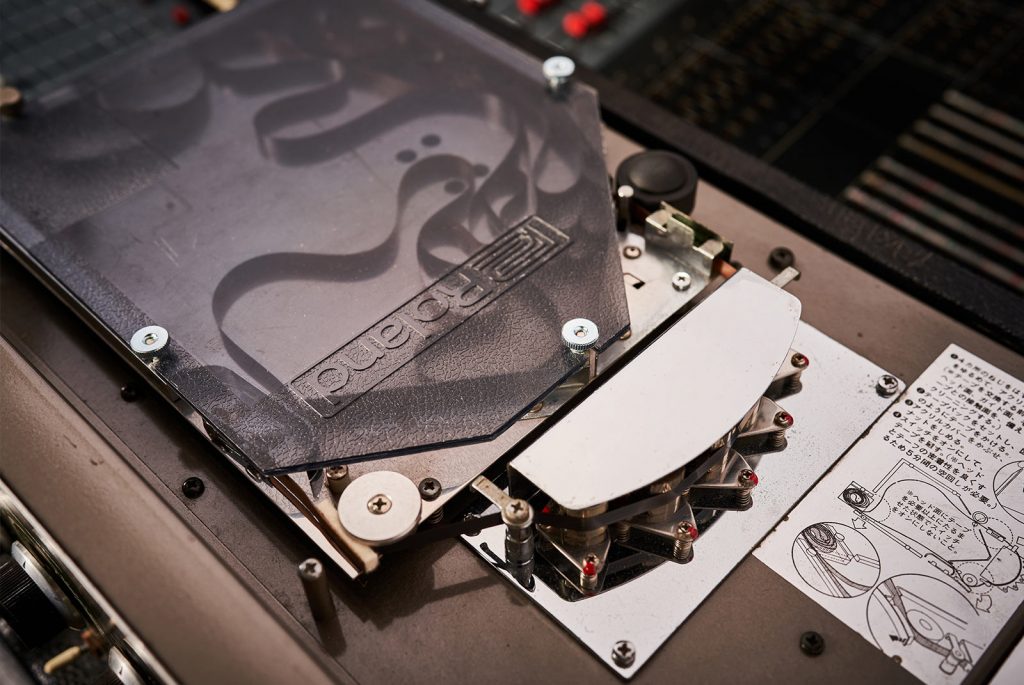
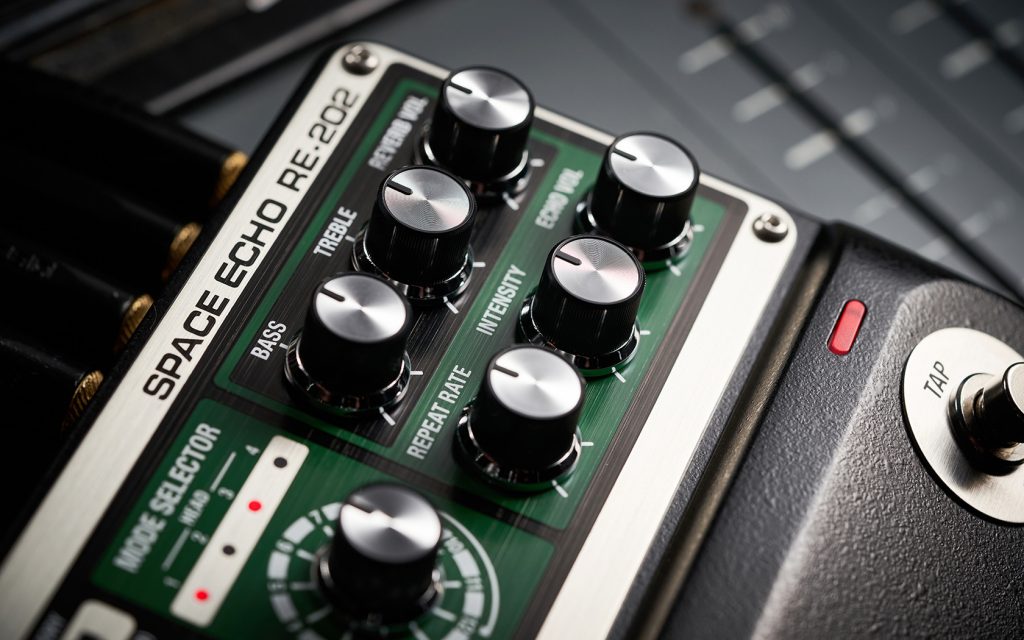
“Lots of players love the special sound of a vintage or aging unit. So, we wanted to realize this behavior but make it controllable.”
A Range of Tones
Throughout the process, was there a particular point you continued to focus on?
Well, each RE-201 had its own sound. They all sounded great. But with an original unit, it’s difficult to keep the condition exact. Once you change the tape, the sound you had before may be lost. Lots of players love the special sound of a vintage or aging unit. So, we wanted to realize this behavior but make it controllable—so that you can always go between different sounds without worry.
The RE-202 covers a huge range of tape tones, from aggressive, modulated echoes with lots of distortion to crystal-clear echoes. Almost like an original RE-201 fresh off the production line. Lovers of the vintage Spaces Echo can enjoy the sound without maintenance or fear of their precious unit changing.
Is there anything you are particularly happy and satisfied with in terms of the development?
The process was tough but very fun, so it is difficult to choose just one point. It was great to be able to reproduce the classic wow and flutter many people talk about with tape echo units. Not only that but being able to adjust preamp distortion as well. Recreating the sound of the RE-201 preamp was key as it’s why so many players and engineers use a RE-201 for recording and mixing.
"Recreating the sound of the RE-201 preamp was key as it’s why so many players and engineers use a RE-201 for recording and mixing."
The Quality of Surprises
Can you explain the quality of that original preamp?
In the original RE-201, the preamp was designed as a means to increase the input signal without a large characteristic change. But due to the nature of the design, the high end, in fact, decreased, which helped create its unique warm and fat sound. This is why people love using them for recording, even placing the unit directly into the front of an amplifier.
Were there any surprises in the development process?
When we create products, there are always surprises. Deeply analyzing so many units, we couldn’t believe how much tape age interacts with the unit to change the overall sound character and output. Not only that, but how much modulation can be added to the sound from different tapes.

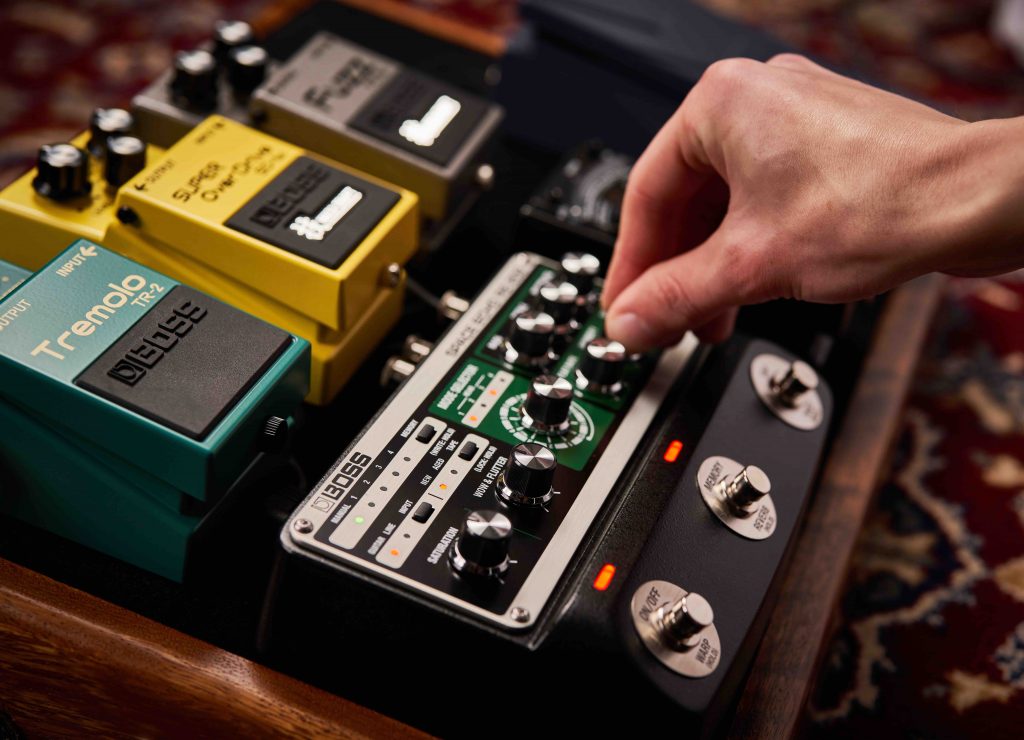
"Deeply analyzing so many units, we couldn’t believe how much tape age interacts with the unit to change the overall sound."
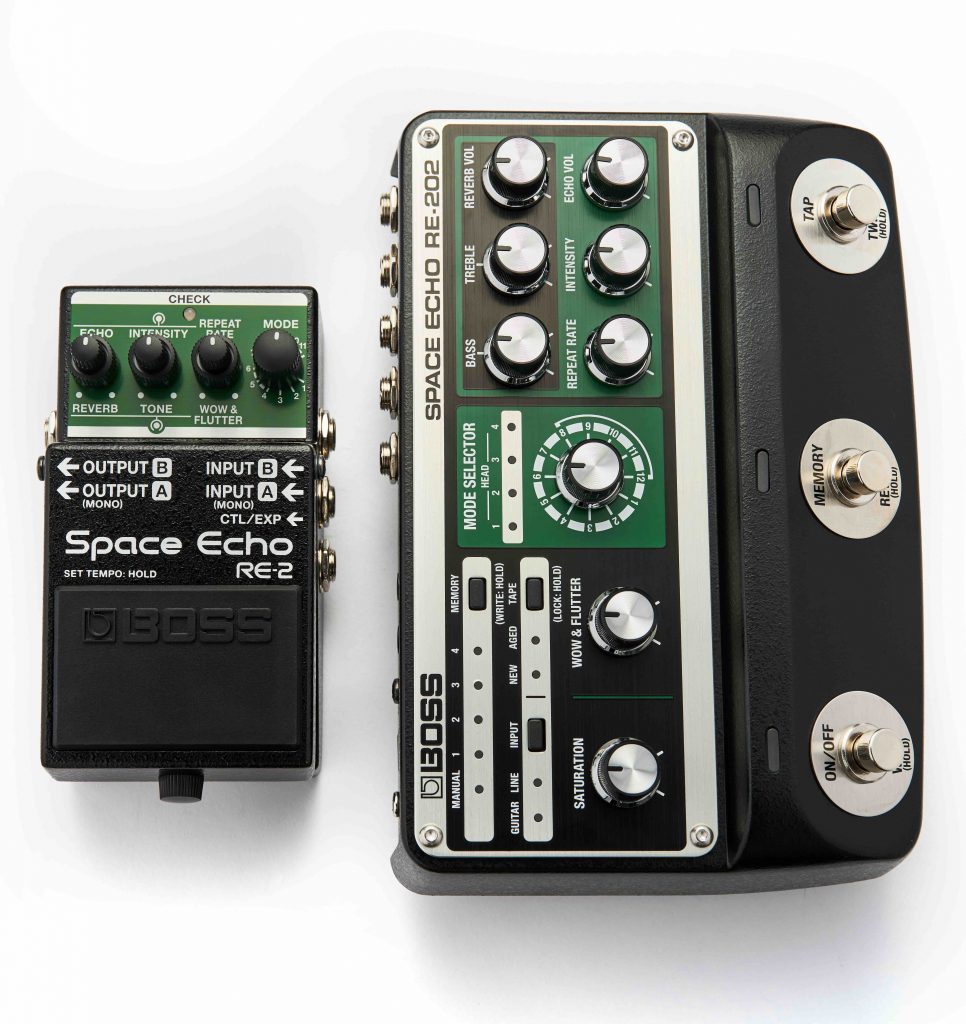
Age Meets Analysis
How did you approach modeling tape age?
This was a very detailed process. We had to take the units we were analyzing and then replace the tapes one by one. We didn’t just use new tape but different tape conditions to see how it affected the overall character. Not many people can say they’ve changed Space Echo tape as much as we did. In fact, during the final review, a tape that was brand new when we started broke during the last test. According to the spec sheet, an original RE-201 tape should last 300 hours. We had at least 300 hours of sound analysis on one tape.
What were some challenges during production?
With so many mechanical factors to consider, we had to think about how every component, big and small, were linked. We had to look at how they interact, see what changes they made, and then model that behavior. Each component had a different relevance to the overall sound. Going through the circuit in such detail felt like an endless journey.
"The RE-201 was the first product that transcended genres and styles thanks to its flexibility. This contributed to its now legendary status."
The Unpredictable Wow
How did you recreate wow and flutter, an unpredictable phenomenon?
Actually, almost all factors are unpredictable. This caused a headache, and we had to work out how best to attack such a unique parameter. In fact, we created a random algorithm in the wow and flutter section that works alongside the analysis of the mechanical factors. This random element is based on our detailed analysis of several RE-201 units and trying to find the right balance, so it’s not totally random. This allowed us to create a Wow & Flutter control that feels and sounds very natural, just like an original RE-201.
What set the RE-201 apart from other tape echoes and helped it gain fame?
Good question. Some people don’t know the Roland Space Echo history, but other units like the RE-100 and RE-200 are rare—and not as famous. After the RE-201, we followed up with the RE-301 and RE-501 that added features like chorus. These were popular, but the RE-201 was the first product that transcended genres and styles thanks to its flexibility. This contributed to its now legendary status. We think part of the reason was the design of a free-running tape system that used an endless, long tape. Coupled with a standby mode (the tape stopped rotating when an external footswitch was activated), this improved tape life and stability.

"You can decide if you want spring, hall, plate, or ambience reverb. This is great for those experiencing the Space Echo for the first time."
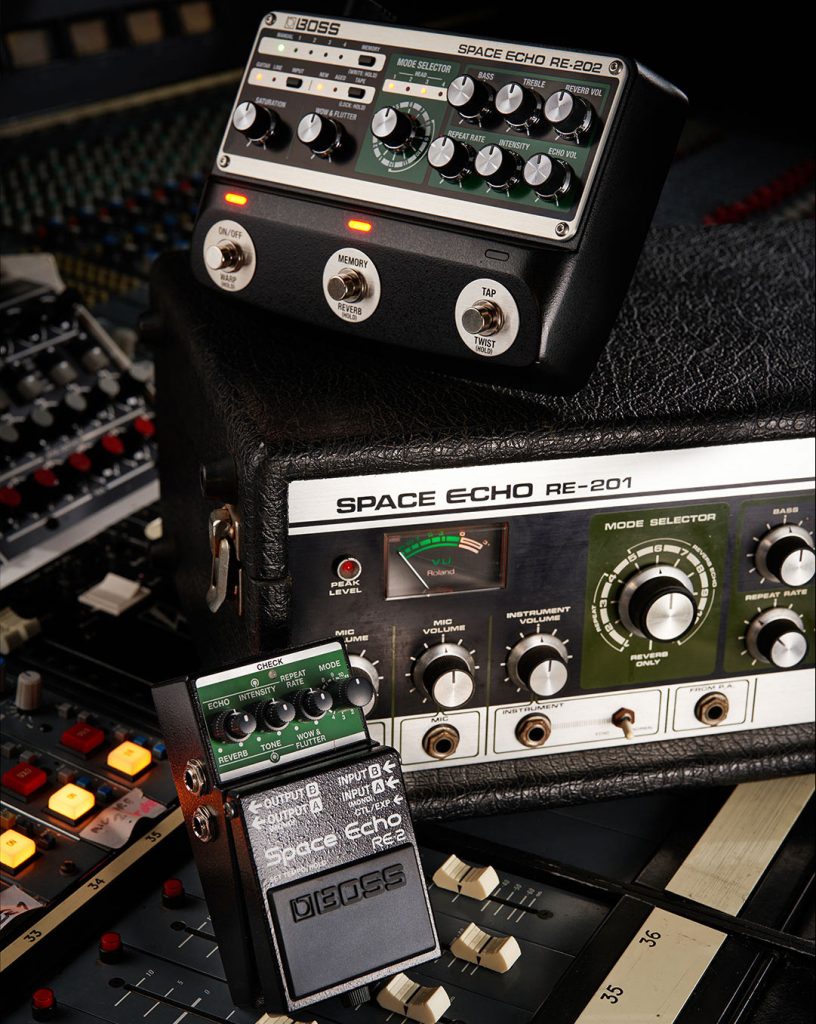
The RE-201 tape life was 15 times longer than previous models. This was a huge plus for pro musicians at the time, as they could rely on the Roland unit. It’s the same today. We pride ourselves on incredible, solid, and consistent design. Any musician could enjoy RE-201, which helped it become so popular.
Reverberations into the Future
Explain how the RE-202 allows users to change the reverb type.
Many people will recognize the classic combination of spring reverb and Tape Echo. The spring sound is recognizable to musicians, especially for reggae and dub mixes. At the time, players could only install a spring tank in a unit. There was no mechanical option for other reverb types that are available now.
We wanted RE-202 to be the next step in the Space Echo story and to include sounds not found in the original. Many say that spring reverb is best for a Tape Echo. But we think it’s down to the player to decide. So, we gave them the option. Now, you can decide if you want spring, hall, plate, or ambience reverb. This is great for those experiencing the Space Echo for the first time who aren’t familiar with the original spring sound. They can decide what works for them.
The RE-202 brings the full experience of RE-201 plus modern features but the RE-2 brings authentic RE-201 tone in a simple compact format. This enables users to place easily on a pedalboard.
"Hardcore fans will recognize the shape, as it's inherited from the BOSS CE-1. It felt like a great homage to pay."
Shapes of Things
How did you decide on the RE-202 chassis shape?
Hardcore BOSS fans will recognize the shape, as it’s inherited from the original BOSS CE-1 Chorus. This was our pedal design before the compact pedal in 1977. We wanted a vintage feel for the RE-202 and felt it should be a BOSS design, so we adapted the CE-1 look. As the CE-1 was the first BOSS pedal, it felt like a great homage to pay.
What are the key differences between the RE-202 and the original?
We’ve spoken a lot about sound and character. We’ve worked hard to make the best-sounding Space Echo pedal that sounds just like the original. To realize modern design ideas and the next step in Space Echo history, we added many new options. One major addition is a fourth virtual tape head that unlocks five additional sound combinations. Another of our favorite new features is the ability to bypass the reverb with a footswitch. This is very cool as now it’s like two pedals in one.
Plus, we added Twist and Warp functions to allow players to bend and shape the tape echo sounds in real-time during a performance—all hands-free. Lastly, of course, is stereo operation. We already talked about the dreamy Space Echo sound and its repeats. Now you can hear this in stereo. It’s huge!
